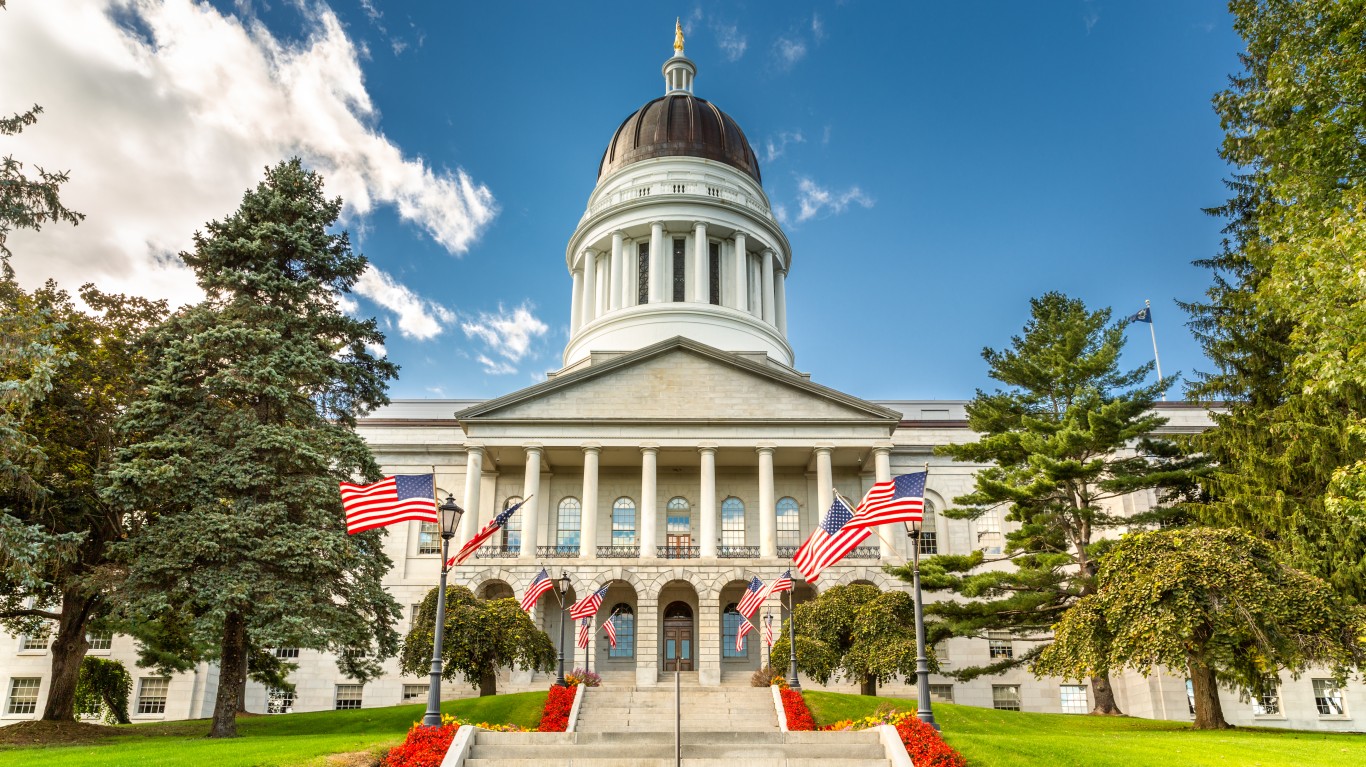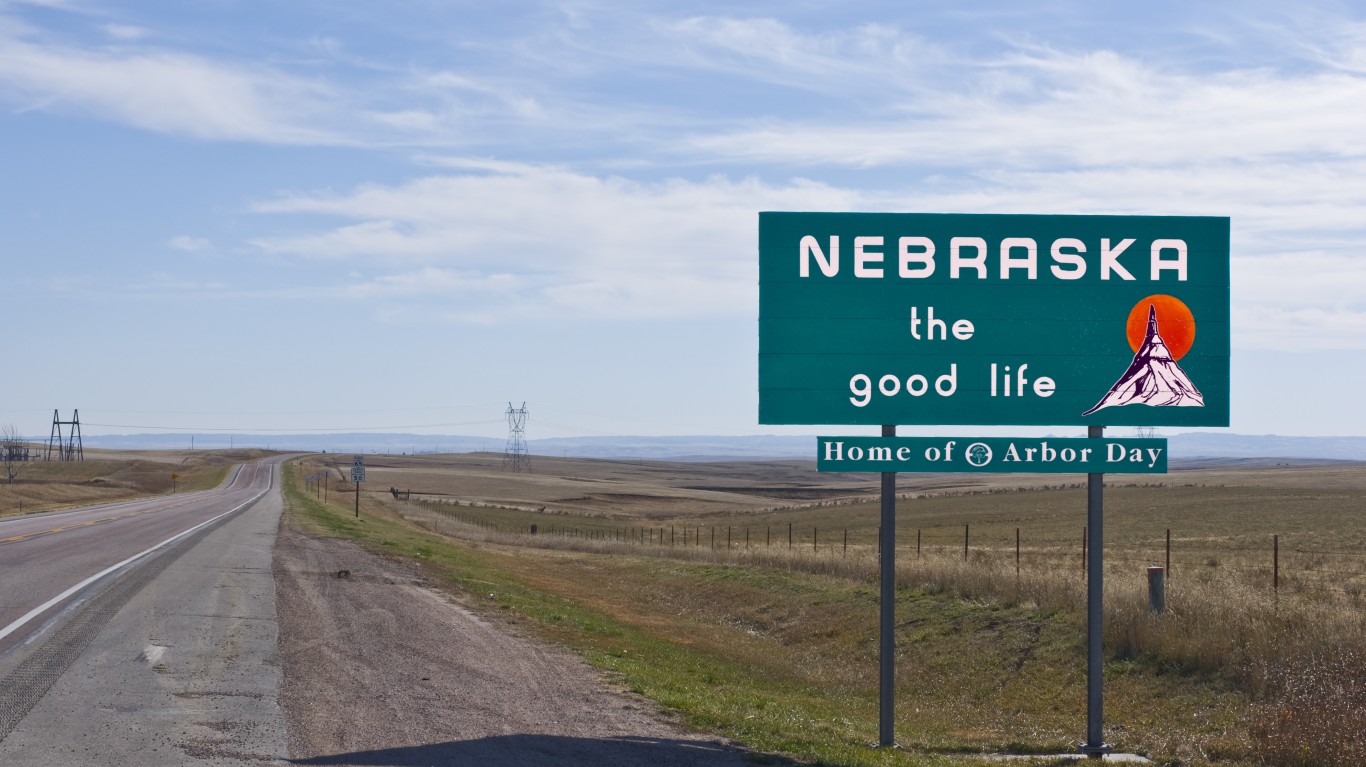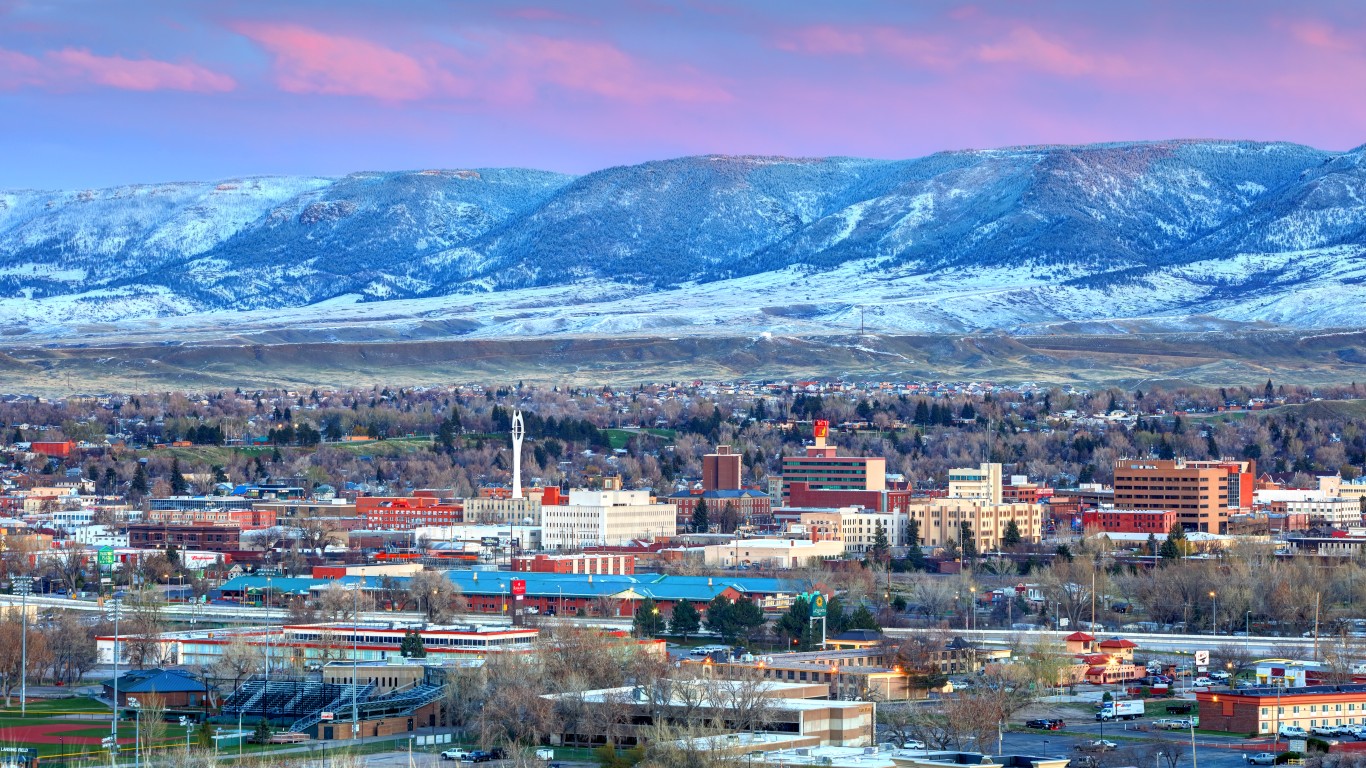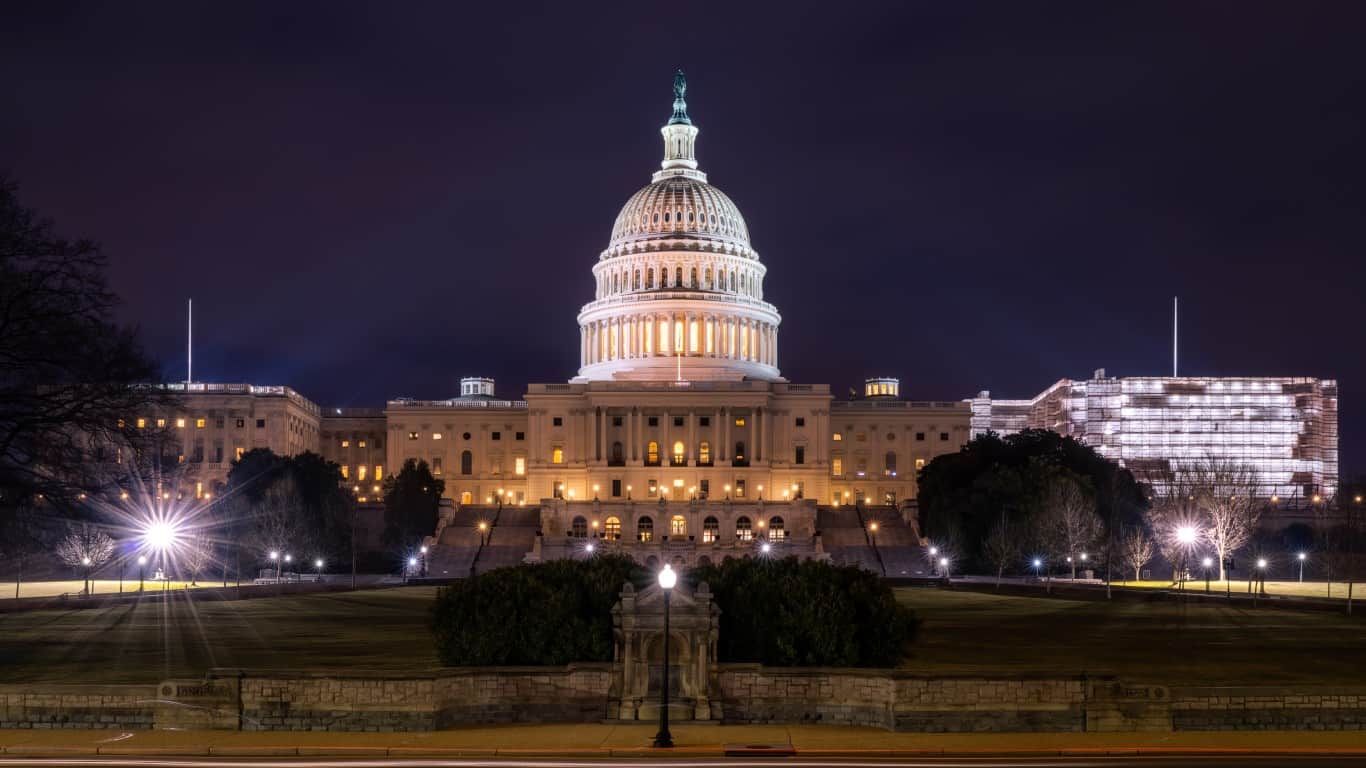
On June 7th, the U.S. government published jobs data revealing 272,000 jobs were added in May of the same year. However, the report also indicates that fewer Americans were working in May 2024 when compared to April 2024. This can only mean one thing: employed Americans are working multiple jobs to earn a living wage.
America is a success-driven culture that prioritizes hard work, wealth, and consumption. With the average full-time American employee working 44 hours each week, satisfaction in the workplace is essential. Unfortunately, many Americans are not happy in the workplace. According to a Pew Research survey, only roughly 50% of U.S. workers are very satisfied with their job.
Though a high number of Americans yearn for a different way to earn a living, residents of certain states are more satisfied with their work life than residents of other states. According to Oxfam America, a poverty-focused nonprofit, states with “the most robust laws to mandate adequate wages, safe conditions, and rights to organize” are the most beneficial to workers.
Oxfam ranked all 50 states based on these factors. The Oxfam report, “Best and Worst States to Work in America 2023”, rated each state (and D.C.) on a scale of 1 to 100 based on three specific measures and specified percentages: wage policies (40%), worker protections (35%), and rights to organize (25%). Along with this data, we gathered each state’s preliminary unemployment rate from September 2023 from the Bureau of Labor and Statistics. Average income from 2022 was also assessed, multiplying average weekly earnings by 52 to find yearly income. After reviewing this information, 24/7 Wall St. listed all 50 states from best to worst to work in.
Unsurprisingly, the best states to work in tend to score high in worker protection, with Oregon scoring the highest in this category, at 92.86 out of 100. Though California scored roughly 7 points lower in worker protections and sees unemployment rates above the national average, it still managed to beat the Beaver State due to high average earnings. Similarly, other top scoring states/areas, like New York and D.C., have high average income.
In terms of employment, Maryland beats out all other states with an unemployment rate of only 1.6%. However, it only ranks 13th place overall based on its worker protection score (53.57) and right to organize score (80).
Three West Coast states rank in the top five contenders, including California, Oregon, and Washington. In contrast, the southern state of North Carolina comes in last place, with a score of just 7.57 out of 100. Like a handful of other southern states, it has a right to work score of 0. It also has a low worker protection score of only 15.48. However, this number seems high compared to Mississippi’s score, which is a mere 7.14 for protection for workers.
Why We Are Covering This

Remote work is on the rise and disgruntled employees finally have a reason to stay out of the office, helping them avoid everyday work stressors. However, plenty of Americans are unable to do their job from home. Knowing which states support workers is important when deciding where to live or begin a career. Though North Carolina offers some of the most beautiful scenery the country has to offer, practical-minded Americans in the workforce may want to steer clear of this lowest scoring state.
1. California

- Overall score: 86.01 out of 100
- Worker protection score: 85.71 out of 100
- Right to organize score: 100 out of 100
- Unemployment rate, Sept 2023: 4.7% compared to 3.8% national rate
- Average earnings, 2022: $67,167 (4th highest)
2. Oregon

- Overall score: 85.52 out of 100
- Worker protection score: 92.86 out of 100
- Right to organize score: 100 out of 100
- Unemployment rate, Sept 2023: 3.5% compared to 3.8% national rate
- Average earnings, 2022: $57,238 (16th highest)
3. District of Columbia
- Overall score: 81.63 out of 100
- Worker protection score: 63.1 out of 100
- Right to organize score: 100 out of 100
- Unemployment rate, Sept 2023: 5.0% compared to 3.8% national rate
- Average earnings, 2022: $92,595 (the highest)
4. New York

- Overall score: 78.24 out of 100
- Worker protection score: 71.43 out of 100
- Right to organize score: 100 out of 100
- Unemployment rate, Sept 2023: 4.0% compared to 3.8% national rate
- Average earnings, 2022: $62,026 (5th highest)
5. Washington

- Overall score: 77.83 out of 100
- Worker protection score: 71.43 out of 100
- Right to organize score: 80 out of 100
- Unemployment rate, Sept 2023: 3.6% compared to 3.8% national rate
- Average earnings, 2022: $68,312 (3rd highest)
6. Massachusetts

- Overall score: 75.55 out of 100
- Worker protection score: 67.86 out of 100
- Right to organize score: 90 out of 100
- Unemployment rate, Sept 2023: 2.6% compared to 3.8% national rate
- Average earnings, 2022: $69,109 (2nd highest)
7. Connecticut

- Overall score: 73.78 out of 100
- Worker protection score: 67.86 out of 100
- Right to organize score: 80 out of 100
- Unemployment rate, Sept 2023: 3.5% compared to 3.8% national rate
- Average earnings, 2022: $60,936 (8th highest)
8. Colorado
- Overall score: 72.13 out of 100
- Worker protection score: 60.71 out of 100
- Right to organize score: 90 out of 100
- Unemployment rate, Sept 2023: 3.2% compared to 3.8% national rate
- Average earnings, 2022: $59,688 (11th highest)
9. New Jersey
- Overall score: 71.73 out of 100
- Worker protection score: 60.71 out of 100
- Right to organize score: 90 out of 100
- Unemployment rate, Sept 2023: 4.4% compared to 3.8% national rate
- Average earnings, 2022: $59,812 (10th highest)
10. Illinois

- Overall score: 69.4 out of 100
- Worker protection score: 60.71 out of 100
- Right to organize score: 95 out of 100
- Unemployment rate, Sept 2023: 4.4% compared to 3.8% national rate
- Average earnings, 2022: $58,296 (13th highest)
11. Vermont

- Overall score: 68.23 out of 100
- Worker protection score: 50 out of 100
- Right to organize score: 90 out of 100
- Unemployment rate, Sept 2023: 1.9% compared to 3.8% national rate
- Average earnings, 2022: $52,347 (24th lowest)
12. Maine

- Overall score: 66.55 out of 100
- Worker protection score: 46.43 out of 100
- Right to organize score: 80 out of 100
- Unemployment rate, Sept 2023: 2.7% compared to 3.8% national rate
- Average earnings, 2022: $51,237 (15th lowest)
13. Maryland

- Overall score: 63.61 out of 100
- Worker protection score: 53.57 out of 100
- Right to organize score: 80 out of 100
- Unemployment rate, Sept 2023: 1.6% compared to 3.8% national rate
- Average earnings, 2022: $59,985 (9th highest)
14. Rhode Island

- Overall score: 62.78 out of 100
- Worker protection score: 57.14 out of 100
- Right to organize score: 80 out of 100
- Unemployment rate, Sept 2023: 2.6% compared to 3.8% national rate
- Average earnings, 2022: $55,849 (19th highest)
15. Hawaii

- Overall score: 62.66 out of 100
- Worker protection score: 50 out of 100
- Right to organize score: 90 out of 100
- Unemployment rate, Sept 2023: 2.8% compared to 3.8% national rate
- Average earnings, 2022: $58,339 (12th highest)
16. New Mexico

- Overall score: 60.89 out of 100
- Worker protection score: 47.62 out of 100
- Right to organize score: 80 out of 100
- Unemployment rate, Sept 2023: 3.7% compared to 3.8% national rate
- Average earnings, 2022: $47,244 (3rd lowest)
17. Minnesota
- Overall score: 60.78 out of 100
- Worker protection score: 48.81 out of 100
- Right to organize score: 90 out of 100
- Unemployment rate, Sept 2023: 3.1% compared to 3.8% national rate
- Average earnings, 2022: $60,958 (7th highest)
18. Arizona
- Overall score: 58.05 out of 100
- Worker protection score: 40.48 out of 100
- Right to organize score: 60 out of 100
- Unemployment rate, Sept 2023: 4.0% compared to 3.8% national rate
- Average earnings, 2022: $55,176 (20th highest)
19. Nevada
- Overall score: 54.96 out of 100
- Worker protection score: 46.43 out of 100
- Right to organize score: 70 out of 100
- Unemployment rate, Sept 2023: 5.4% compared to 3.8% national rate
- Average earnings, 2022: $51,885 (19th lowest)
20. Delaware

- Overall score: 54.05 out of 100
- Worker protection score: 35.71 out of 100
- Right to organize score: 95 out of 100
- Unemployment rate, Sept 2023: 4.1% compared to 3.8% national rate
- Average earnings, 2022: $50,879 (13th lowest)
21. Ohio
- Overall score: 52.8 out of 100
- Worker protection score: 33.33 out of 100
- Right to organize score: 95 out of 100
- Unemployment rate, Sept 2023: 3.4% compared to 3.8% national rate
- Average earnings, 2022: $52,340 (23rd lowest)
22. Alaska

- Overall score: 47.29 out of 100
- Worker protection score: 29.76 out of 100
- Right to organize score: 50 out of 100
- Unemployment rate, Sept 2023: 4.1% compared to 3.8% national rate
- Average earnings, 2022: $61,352 (6th highest)
23. Montana

- Overall score: 47.03 out of 100
- Worker protection score: 29.76 out of 100
- Right to organize score: 60 out of 100
- Unemployment rate, Sept 2023: 2.7% compared to 3.8% national rate
- Average earnings, 2022: $47,834 (5th lowest)
24. Nebraska

- Overall score: 46.07 out of 100
- Worker protection score: 34.52 out of 100
- Right to organize score: 70 out of 100
- Unemployment rate, Sept 2023: 2.1% compared to 3.8% national rate
- Average earnings, 2022: $51,392 (16th lowest)
25. Michigan

- Overall score: 46.02 out of 100
- Worker protection score: 38.1 out of 100
- Right to organize score: 60 out of 100
- Unemployment rate, Sept 2023: 3.9% compared to 3.8% national rate
- Average earnings, 2022: $54,583 (22nd highest)
26. South Dakota

- Overall score: 45.29 out of 100
- Worker protection score: 29.76 out of 100
- Right to organize score: 40 out of 100
- Unemployment rate, Sept 2023: 1.9% compared to 3.8% national rate
- Average earnings, 2022: $47,626 (4th lowest)
27. Virginia
- Overall score: 44.89 out of 100
- Worker protection score: 41.67 out of 100
- Right to organize score: 65 out of 100
- Unemployment rate, Sept 2023: 2.5% compared to 3.8% national rate
- Average earnings, 2022: $57,966 (14th highest)
28. New Hampshire

- Overall score: 43.17 out of 100
- Worker protection score: 38.1 out of 100
- Right to organize score: 80 out of 100
- Unemployment rate, Sept 2023: 2.0% compared to 3.8% national rate
- Average earnings, 2022: $57,368 (15th highest)
29. Florida

- Overall score: 40.86 out of 100
- Worker protection score: 29.76 out of 100
- Right to organize score: 60 out of 100
- Unemployment rate, Sept 2023: 2.8% compared to 3.8% national rate
- Average earnings, 2022: $52,616 (25th lowest)
30. Missouri

- Overall score: 39.01 out of 100
- Worker protection score: 26.19 out of 100
- Right to organize score: 50 out of 100
- Unemployment rate, Sept 2023: 2.9% compared to 3.8% national rate
- Average earnings, 2022: $50,681 (12th lowest)
31. Pennsylvania

- Overall score: 37.24 out of 100
- Worker protection score: 29.76 out of 100
- Right to organize score: 80 out of 100
- Unemployment rate, Sept 2023: 3.4% compared to 3.8% national rate
- Average earnings, 2022: $52,983 (25th highest)
32. West Virginia

- Overall score: 30.76 out of 100
- Worker protection score: 29.76 out of 100
- Right to organize score: 20 out of 100
- Unemployment rate, Sept 2023: 3.8% compared to 3.8% national rate
- Average earnings, 2022: $49,817 (9th lowest)
33. Wisconsin
- Overall score: 29.04 out of 100
- Worker protection score: 29.76 out of 100
- Right to organize score: 40 out of 100
- Unemployment rate, Sept 2023: 3.1% compared to 3.8% national rate
- Average earnings, 2022: $52,069 (21st lowest)
34. Wyoming

- Overall score: 28.69 out of 100
- Worker protection score: 26.19 out of 100
- Right to organize score: 40 out of 100
- Unemployment rate, Sept 2023: 2.9% compared to 3.8% national rate
- Average earnings, 2022: $52,164 (22nd lowest)
35. Iowa

- Overall score: 28.46 out of 100
- Worker protection score: 22.62 out of 100
- Right to organize score: 40 out of 100
- Unemployment rate, Sept 2023: 3.0% compared to 3.8% national rate
- Average earnings, 2022: $50,262 (10th lowest)
36. Indiana

- Overall score: 28.02 out of 100
- Worker protection score: 29.76 out of 100
- Right to organize score: 60 out of 100
- Unemployment rate, Sept 2023: 3.6% compared to 3.8% national rate
- Average earnings, 2022: $52,803 (26th highest)
37. Kentucky

- Overall score: 25.85 out of 100
- Worker protection score: 26.19 out of 100
- Right to organize score: 40 out of 100
- Unemployment rate, Sept 2023: 4.1% compared to 3.8% national rate
- Average earnings, 2022: $48,611 (7th lowest)
38. Louisiana
- Overall score: 25.76 out of 100
- Worker protection score: 34.52 out of 100
- Right to organize score: 30 out of 100
- Unemployment rate, Sept 2023: 3.3% compared to 3.8% national rate
- Average earnings, 2022: $51,586 (17th lowest)
39. North Dakota

- Overall score: 25.38 out of 100
- Worker protection score: 26.19 out of 100
- Right to organize score: 30 out of 100
- Unemployment rate, Sept 2023: 1.9% compared to 3.8% national rate
- Average earnings, 2022: $55,878 (18th highest)
40. Idaho

- Overall score: 24.79 out of 100
- Worker protection score: 33.33 out of 100
- Right to organize score: 30 out of 100
- Unemployment rate, Sept 2023: 3.1% compared to 3.8% national rate
- Average earnings, 2022: $48,422 (6th lowest)
41. Arkansas

- Overall score: 24.65 out of 100
- Worker protection score: 19.05 out of 100
- Right to organize score: 10 out of 100
- Unemployment rate, Sept 2023: 2.9% compared to 3.8% national rate
- Average earnings, 2022: $46,311 (2nd lowest)
42. Kansas

- Overall score: 23.82 out of 100
- Worker protection score: 26.19 out of 100
- Right to organize score: 40 out of 100
- Unemployment rate, Sept 2023: 2.8% compared to 3.8% national rate
- Average earnings, 2022: $50,993 (14th lowest)
43. Oklahoma
- Overall score: 23.81 out of 100
- Worker protection score: 33.33 out of 100
- Right to organize score: 30 out of 100
- Unemployment rate, Sept 2023: 3.0% compared to 3.8% national rate
- Average earnings, 2022: $48,945 (8th lowest)
44. Tennessee

- Overall score: 20.6 out of 100
- Worker protection score: 26.19 out of 100
- Right to organize score: 30 out of 100
- Unemployment rate, Sept 2023: 3.2% compared to 3.8% national rate
- Average earnings, 2022: $51,929 (20th lowest)
45. Utah

- Overall score: 18.62 out of 100
- Worker protection score: 29.76 out of 100
- Right to organize score: 20 out of 100
- Unemployment rate, Sept 2023: 2.6% compared to 3.8% national rate
- Average earnings, 2022: $54,978 (21st highest)
46. Texas

- Overall score: 14.7 out of 100
- Worker protection score: 26.19 out of 100
- Right to organize score: 0 out of 100
- Unemployment rate, Sept 2023: 4.1% compared to 3.8% national rate
- Average earnings, 2022: $55,929 (17th highest)
47. Alabama

- Overall score: 13.1 out of 100
- Worker protection score: 21.43 out of 100
- Right to organize score: 10 out of 100
- Unemployment rate, Sept 2023: 2.2% compared to 3.8% national rate
- Average earnings, 2022: $51,815 (18th lowest)
48. South Carolina

- Overall score: 12.65 out of 100
- Worker protection score: 26.19 out of 100
- Right to organize score: 0 out of 100
- Unemployment rate, Sept 2023: 2.9% compared to 3.8% national rate
- Average earnings, 2022: $50,591 (11th lowest)
49. Georgia

- Overall score: 11.57 out of 100
- Worker protection score: 19.05 out of 100
- Right to organize score: 0 out of 100
- Unemployment rate, Sept 2023: 3.4% compared to 3.8% national rate
- Average earnings, 2022: $53,699 (23rd highest)
50. Mississippi

- Overall score: 11.16 out of 100
- Worker protection score: 7.14 out of 100
- Right to organize score: 20 out of 100
- Unemployment rate, Sept 2023: 3.2% compared to 3.8% national rate
- Average earnings, 2022: $43,145 (the lowest)
51. North Carolina

- Overall score: 7.57 out of 100
- Worker protection score: 15.48 out of 100
- Right to organize score: 0 out of 100
- Unemployment rate, Sept 2023: 3.4% compared to 3.8% national rate
- Average earnings, 2022: $53,592 (24th highest)
Want to Retire Early? Start Here (Sponsor)
Want retirement to come a few years earlier than you’d planned? Or are you ready to retire now, but want an extra set of eyes on your finances?
Now you can speak with up to 3 financial experts in your area for FREE. By simply clicking here you can begin to match with financial professionals who can help you build your plan to retire early. And the best part? The first conversation with them is free.
Click here to match with up to 3 financial pros who would be excited to help you make financial decisions.
Thank you for reading! Have some feedback for us?
Contact the 24/7 Wall St. editorial team.













